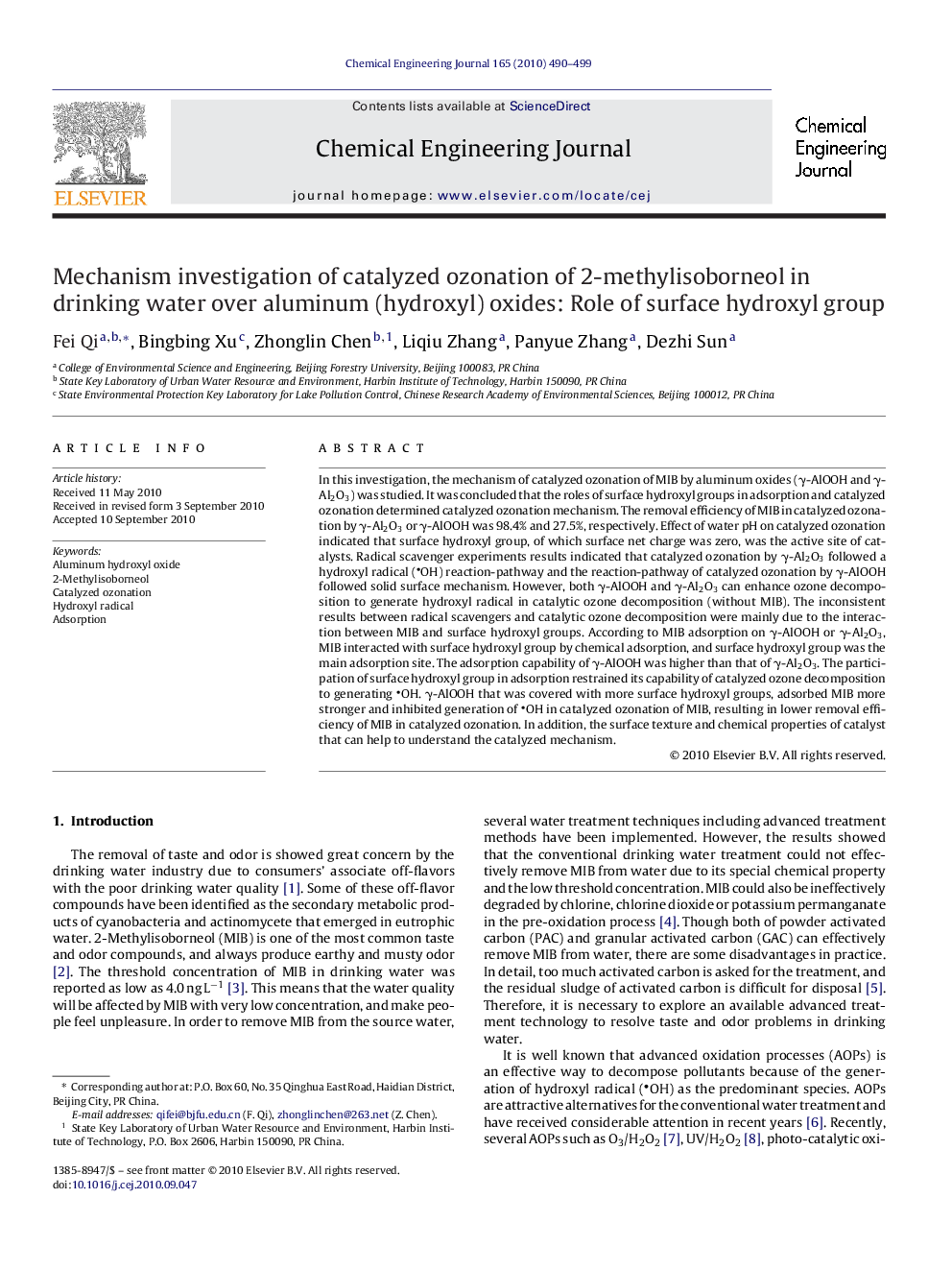| Article ID | Journal | Published Year | Pages | File Type |
|---|---|---|---|---|
| 151727 | Chemical Engineering Journal | 2010 | 10 Pages |
In this investigation, the mechanism of catalyzed ozonation of MIB by aluminum oxides (γ-AlOOH and γ-Al2O3) was studied. It was concluded that the roles of surface hydroxyl groups in adsorption and catalyzed ozonation determined catalyzed ozonation mechanism. The removal efficiency of MIB in catalyzed ozonation by γ-Al2O3 or γ-AlOOH was 98.4% and 27.5%, respectively. Effect of water pH on catalyzed ozonation indicated that surface hydroxyl group, of which surface net charge was zero, was the active site of catalysts. Radical scavenger experiments results indicated that catalyzed ozonation by γ-Al2O3 followed a hydroxyl radical (OH) reaction-pathway and the reaction-pathway of catalyzed ozonation by γ-AlOOH followed solid surface mechanism. However, both γ-AlOOH and γ-Al2O3 can enhance ozone decomposition to generate hydroxyl radical in catalytic ozone decomposition (without MIB). The inconsistent results between radical scavengers and catalytic ozone decomposition were mainly due to the interaction between MIB and surface hydroxyl groups. According to MIB adsorption on γ-AlOOH or γ-Al2O3, MIB interacted with surface hydroxyl group by chemical adsorption, and surface hydroxyl group was the main adsorption site. The adsorption capability of γ-AlOOH was higher than that of γ-Al2O3. The participation of surface hydroxyl group in adsorption restrained its capability of catalyzed ozone decomposition to generating OH. γ-AlOOH that was covered with more surface hydroxyl groups, adsorbed MIB more stronger and inhibited generation of OH in catalyzed ozonation of MIB, resulting in lower removal efficiency of MIB in catalyzed ozonation. In addition, the surface texture and chemical properties of catalyst that can help to understand the catalyzed mechanism.
